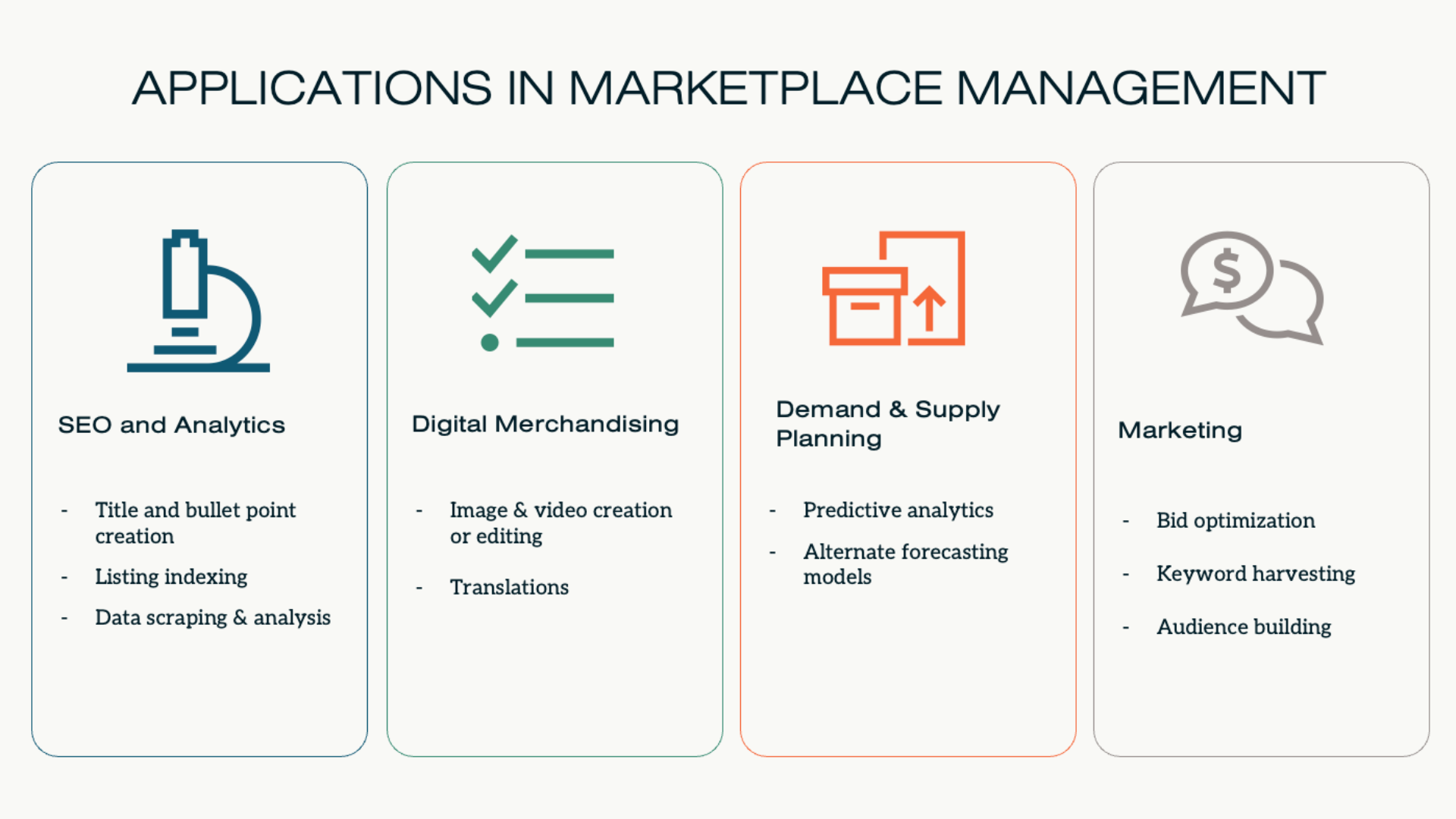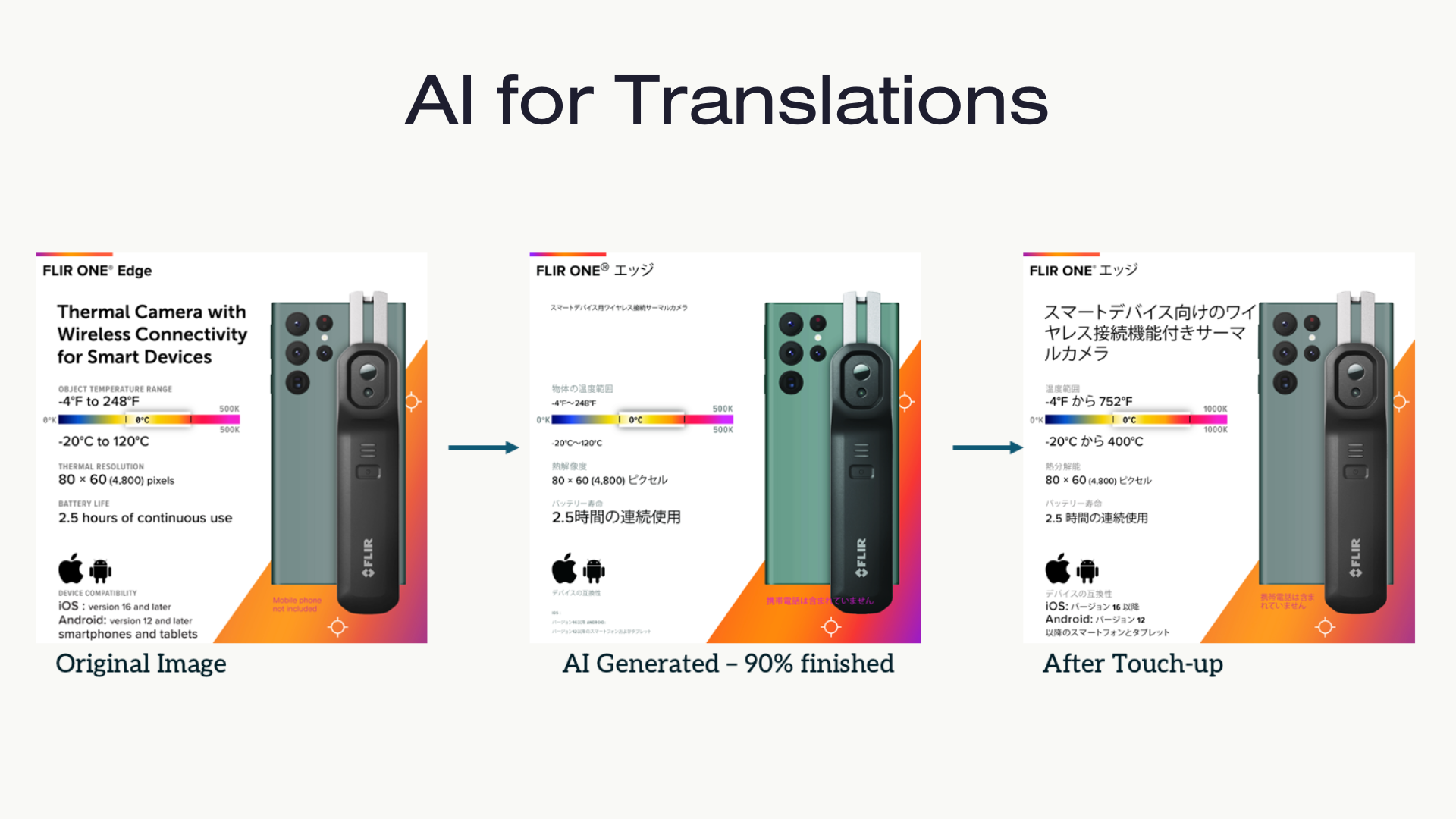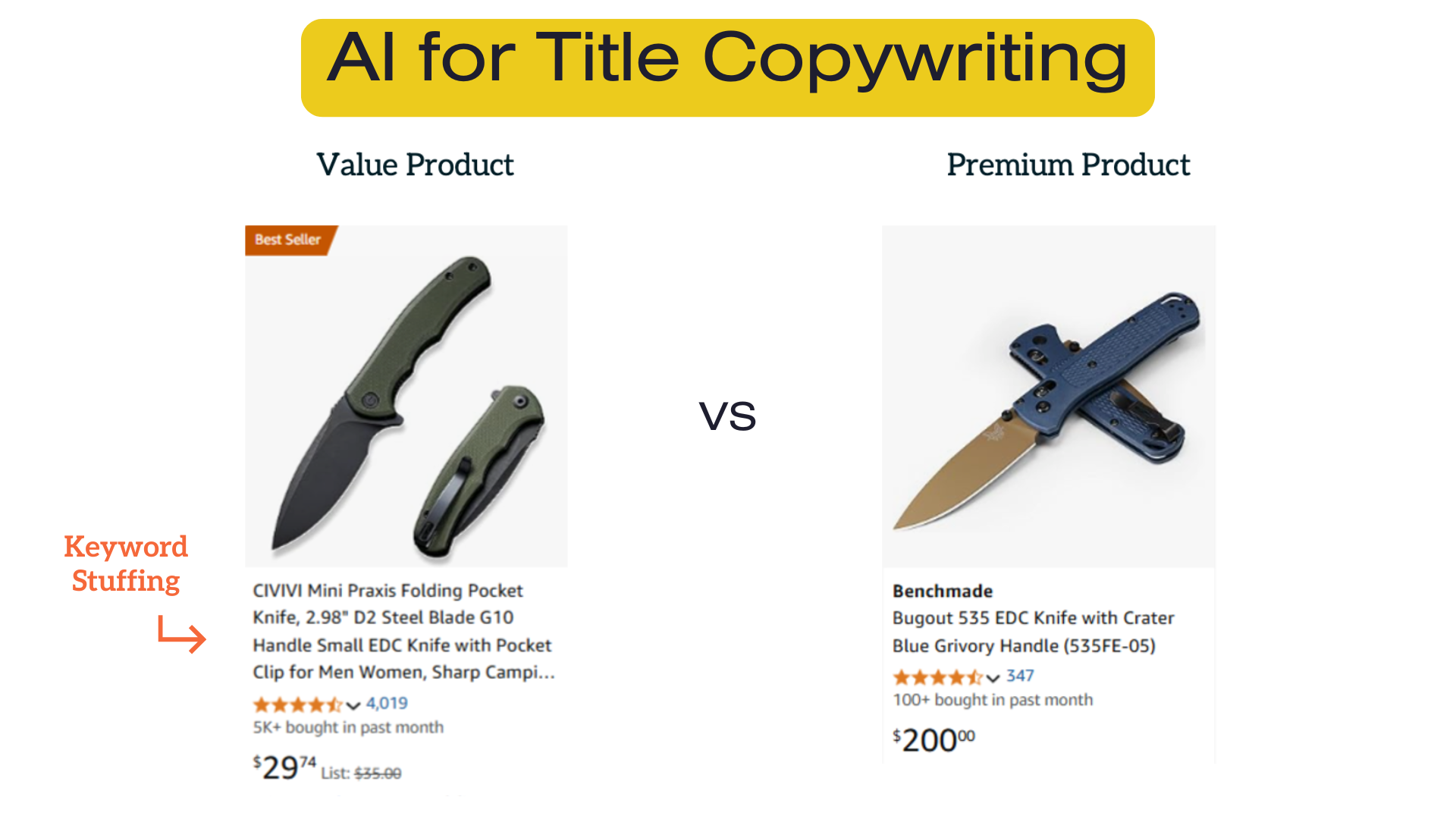Article
Webinar Recap – Exploring AI Tools for Amazon Marketplace Sellers
At our March webinar, Brandwoven CEO, Chris Gray, dove into the transformative role of artificial intelligence for brands selling on Amazon. As generative AI has become increasingly part of many brands’ processes, we explored a few main AI tools that are changing the game for brands on Amazon. With real-world client examples from projects where AI tools were utilized, we walked through the nuances, limitations, and pitfalls to over-reliance on AI for Amazon selling. Explore the key takeaways in this article or watch the entire presentation recording below.
View Webinar Recording & Download the Slide Deck
What We Covered in the Webinar
- How we think about AI in marketplace management
- AI uses for Amazon selling
- AI-generated marketplace asset examples
- AI limitations and pitfalls
- Amazon Rufus AI and how it impacts Amazon consumer shopping behavior
Overview of AI for Amazon Sellers
AI is an exceptional tool that not only should – but has – to be used to be competitive in the Amazon space right now. It’s a tool to drive efficiency in work or drive insights into things that people and systems we currently have just can’t get to as quickly. AI is essential for consolidating data into actions in an environment of near-infinite data.
AI is an incredibly powerful tool, but it is not yet a wholesale replacement for people who can do thinking and adapt quickly to a changing environment. Often times, it oversimplifies complex problems and, if you’re really on the cutting edge of what’s happening, it’s looking at a data set that might be too old. AI is only as good as the data it can access, and this has to be considered when using it for any specific use.
There are many goals to using AI tools for Amazon selling – two of which are rapid analysis and efficiency in content generation. Rapid analysis helps identify the reasoning behind sales fluctuations, understanding drivers like buy box performance, page views, conversion rates, product availability, and overall marketplace traffic. Additionally, efficiency in content generation help compile branded assets that speak to your online consumer while taking significantly less time to produce. While we believe that AI will continue to improve and drive greater efficiencies, human oversight remains crucial.
AI Tools & Applications for Amazon Sellers
- SEO and analytics
- Digital merchandising
- Demand and supply planning
- Marketing & advertising
SEO and Analytics
A huge way that we use AI is in content creation to better display our products and make them more relevant on marketplace. This includes:
- Title and bullet point creation
- Listing indexing
- Data scraping and analysis
- SEO research
- Competitive research
- Sales analytics
For data scraping & analysis, competitive research, and sales analytics, tools like Helium 10 and Jungle Scout have AI-based features to drive efficiency and consolidate results. They can be used for valuable competitive research and gaining new perspectives on sales analytics.
For title & bullet point creation, tools like ChatGPT, Gemini, or Claude are all great at ideating on text when given sufficient content. While AI can assist with title and bullet point ideation, construction, and SEO research, a human still needs to evaluate if the AI-generated suggestions are accurate and if they align with the brand’s voice and product category.
Digital Merchandising
AI can be used for Amazon image & video creation or editing, and translations.
While AI can generate Amazon listing images, we often use it to adjust image aspect ratios and generate infographics that adhere to brand guidelines.
Translations are another significant application, where AI can quickly and cost-effectively translate Amazon product descriptions and even adapt imagery for international marketplaces. AI will often achieve ~90% accuracy which still requires a human for touch-ups, re-sizing, and overall visual correctness.
Demand and Supply Planning
AI plays a crucial role in predictive analytics and alternate forecasting models. Tools like Streamline can analyze data in novel ways to provide new forecasting perspectives. However, as with all the other use cases we’ve mentioned, AI-generated product forecasts should not be used without human oversight. With demand and supply planning, AI might not account for external factors – like marketing campaigns or participation in tentpole events like Prime Day.
Marketing & Advertising
This is perhaps the most prevalent area for Amazon AI application, encompassing:
- Bid optimization
- Keyword harvesting
- Audience building
- Budget allocation and monitoring
Platforms like Pacvue, Tika Metrics, and Perpetua offer AI components for Amazon ads management.
While AI works well for bid optimization and keyword mining, we should emphasize the critical point that everybody could be doing somewhat the same thing if all relying on similar Amazon AI tools with the same data sets. This could impact competitive advantage, necessitating a focus on bigger picture strategy rather than solely relying on AI for Amazon campaign optimization.
AI Tool Limitations
Aside from what we’ve mentioned above (i.e. the importance of human oversight), another potential pitfall is over-reliance on AI tools. We caution against brands getting the idea that AI will fix everything or do everything on their behalf. To emphasize, AI is only as good as the data that it has access to.
Amazon AI Example: Value VS Premium Seller
Let’s take, for example, a value product versus a premium product. AI optimizing the title for the premium $200 folding pocketknife might focus on a broad keyword like “mini folding pocketknife” because that’s what customers search for – it has high search volume and appeals to a wide, general audience. However, this term also speaks to an audience that is looking for a cheap option; they aren’t searching for any specific terminology or brand. As a result, the premium brand optimizing for this keyword wouldn’t attract a buyer in the premium segment. Premium consumer product brands often rely on their unique voice and brand name to do the selling for them – not keyword stuffing their titles (like cheaper alternatives on the market).
Avoiding Amazon AI Tool Pitfalls
To avoid the pitfall of Amazon AI tool reliance, consider the following:
- Know your Amazon products and audience: Understand the factors that AI tools might overlook.
- Understand what AI is trying to maximize: Ensure its objectives align with your Amazon business goals.
- AI tools are not always true: Recognize that AI’s conclusions are based on available data, which may be incomplete, outdated, or otherwise misleading.
- Utilize secondary data sources to verify AI assumptions: Cross-reference AI insights with your own knowledge and other data points.
Amazon Rufus AI
Rufus is Amazon’s AI shopping assistant, aiming to make search more customized for individual shoppers while allowing for more question-based searches.
How Rufus AI impacts the Amazon shopping experience:
- Search Terms: Consumers ask about products or categories using natural language.
- Purchasing Decisions: Rufus allows users to ask specific questions about product features, reviews, or uses, leading to more informed buying decisions.
- Discoverability: Rufus does not show results in the same order as organic rank, as products are customized to the shopper. This means the top results Rufus shows a customer are not influenced by ads but rather the phrasing a customer used.
While adoption rates are currently not extremely high, Amazon Rufus is expected to become increasingly important in the coming 6-18 months.
Conclusion
AI offers a powerful suite of tools to enhance efficiency, gain deeper insights, and ultimately drive success on Amazon. Understanding both the capabilities and limitations of AI tools is paramount for brands looking to stay competitive. Strategic implementation, coupled with human expertise, is the key to unlocking the full potential of this technology.
Effectively navigating the complexities of Amazon marketplace management, especially in the age of AI, requires a comprehensive understanding of the platform, its evolving features like Rufus, and the strategic application of cutting-edge tools. Amazon management is a cornerstone of Brandwoven’s service offerings for ecommerce sellers. Our team of experts stay at the forefront of industry trends and technological advancements to provide tailored strategies and hands-on support, empowering premium brands to thrive and achieve their full potential on Amazon and other leading marketplaces. Our services encompass every crucial aspect of digital marketplace management, including catalog management, digital merchandising, logistics, marketing, and more. Brandwoven prides itself on a consultative approach, valuing long-term partnership and brand stewardship above all else. If you are interested in exploring how Brandwoven can help your brand leverage the power of AI and our comprehensive suite of marketplace management services, we invite you to schedule a consultation.


